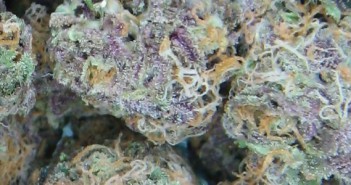Maryland Medical Marijuana Facts
Maryland Medical Marijuana Stats

Maryland state law requires every licensed marijuana grower and dispensary to report annually on the number of minority and women owners and employees. As of June 2018, marijuana industry ownership in Maryland is comprised of 35% racially and ethnically diverse peoples. Additionally, 57% minority ownership, including females, was reported to the Maryland Medical Cannabis Commission.
These marijuana statistics and numbers were obtained from pre-approved applicants, meaning that the numbers are subject to change as more businesses establish licensure. Thanks to timely background investigations, 15 pre-approvals have been issued to growing companies, as well as an additional 15 pre-approvals to marijuana processing companies. Marijuana dispensaries currently have 102 pre-approvals.
If the Maryland Medical Cannabis Commission maintains this pace—six licenses per month—all pre-approved dispensaries could be ready to provide medical marijuana to a large number of cannabis patients by the end of 2018.
The demand for medicinal marijuana in the state of Maryland is growing rapidly. Since the end of 2017, approximately 29,000 patients have been added to the approved list for medical cannabis. That brings the total number of registered patients to 47,086.
Nearly 3,000 of those registered people are caregivers who are able to purchase cannabis on behalf of someone else. Minors account for 172 of the approved registrations. There are currently 946 fully registered and licensed medical marijuana dispensaries in Maryland.
Though Maryland experienced one of the slowest medical marijuana rollouts in the nation, dispensaries began serving patients in late 2017. Many patients waited years for medical cannabis access and were overjoyed with the start of the program. Prices started a bit high, but many hope they will decrease as more and more providers become licensed and ignite market competition.
Several bills that would have been detrimental to the medical marijuana program were put to rest in 2018. One such bill, HB 1668, would have required doctors to put themselves at risk of federal punishment by recommending cannabis quantities for patients. Another bill aimed at increasing the number of minority-owned medical cannabis businesses passed this year.
It hasn’t been all smooth sailing in the Maryland medical marijuana business. Earlier this year, a computer system that houses medical cannabis prescriptions was repeatedly crashing. Many of Maryland’s 47,000 registered medical marijuana patients were turned away from marijuana dispensaries.
The issues with the commission’s servers may have been a result of a high volume of unexpected traffic. The commission issued a statement in June acknowledging that the system was sometimes unresponsive and that they were working to find a solution. While updates have been made, some patients suffering from chronic pain felt that the response was not quick enough.
At this time, recreational marijuana remains illegal in Maryland. Current medical cannabis laws allow registered patients to keep no more than a 30-day supply of medical marijuana at any time. The laws also permit licensed dispensaries to source and sell product from a maximum of 15 growers.
It is illegal for patients to grow their own marijuana. Possession of marijuana in an amount less than 10 grams is a civil offense and carries a maximum fine of $100. Possession of an amount of marijuana between 10 grams and 50 pounds is a misdemeanor punishable by one year in jail and/or a maximum $1,000 fine. It is not permissible to use marijuana openly in public. A civil fine of $500 can be imposed for public marijuana consumption.
Dispensaries carry a number of medical marijuana products, such as:
Concentrates: Essential oils from cannabis plants.
Edibles: Cannabis-containing food, candy, or beverages.
Topicals: Lotion or massage oil infused with cannabis.
Marijuana plants are grown and harvested in heavily secure facilities. They are then taken to a laboratory for quality testing. They are processed into their final form, including some of the products listed above. Finally, the medical cannabis is sent to dispensaries to be distributed to registered patients.


